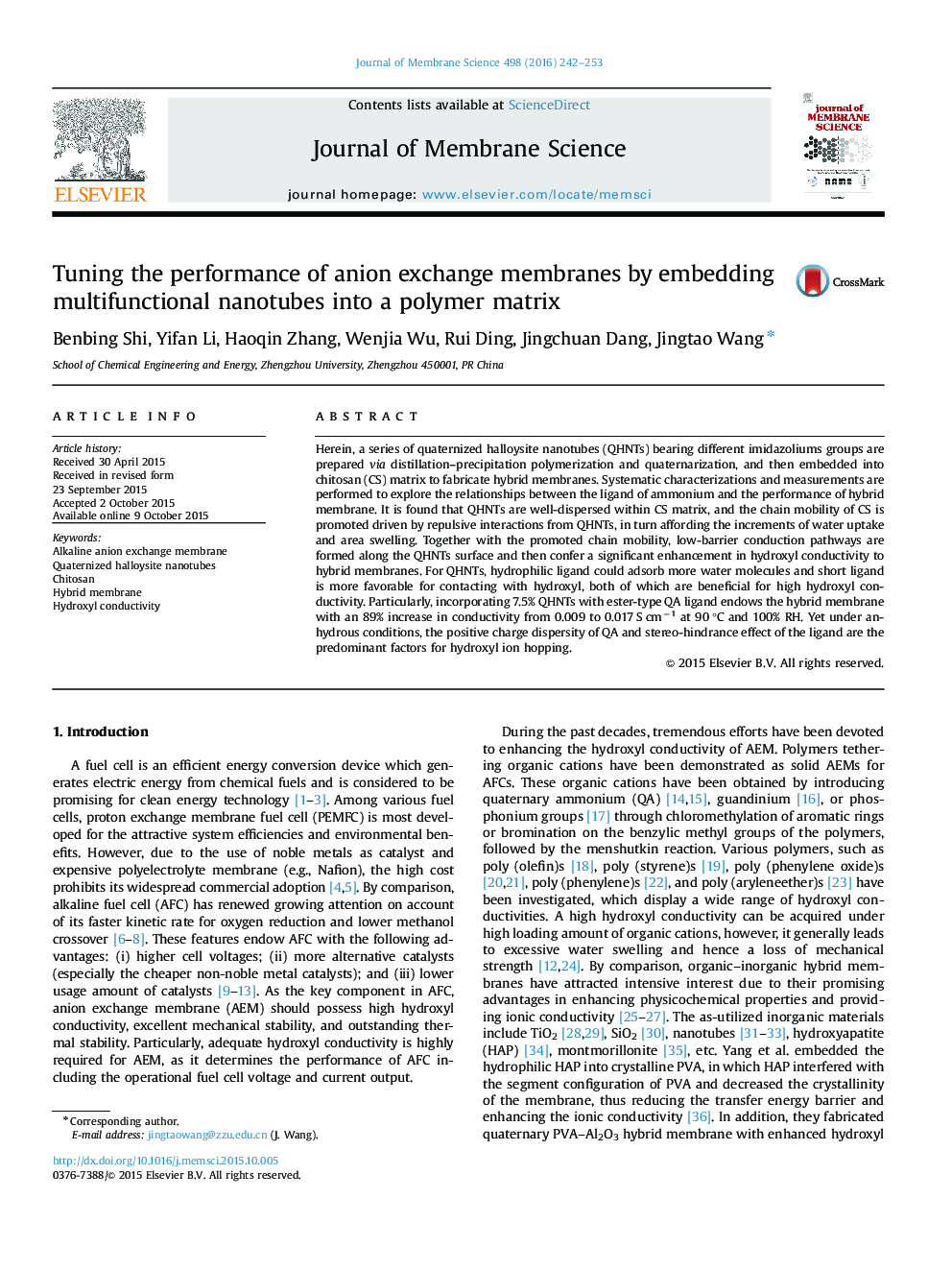| Article ID | Journal | Published Year | Pages | File Type |
|---|---|---|---|---|
| 632824 | Journal of Membrane Science | 2016 | 12 Pages |
•Quaternized HNTs (QHNTs) with four kinds of imidazole cations were synthesized.•QHNTs were uniformly dispersed within chitosan (CS)-based membrane.•The effects of different QHNTs on the membrane structures were investigated.•The structure–conductivity relationships of CS/QHNTs were revealed.
Herein, a series of quaternized halloysite nanotubes (QHNTs) bearing different imidazoliums groups are prepared via distillation–precipitation polymerization and quaternarization, and then embedded into chitosan (CS) matrix to fabricate hybrid membranes. Systematic characterizations and measurements are performed to explore the relationships between the ligand of ammonium and the performance of hybrid membrane. It is found that QHNTs are well-dispersed within CS matrix, and the chain mobility of CS is promoted driven by repulsive interactions from QHNTs, in turn affording the increments of water uptake and area swelling. Together with the promoted chain mobility, low-barrier conduction pathways are formed along the QHNTs surface and then confer a significant enhancement in hydroxyl conductivity to hybrid membranes. For QHNTs, hydrophilic ligand could adsorb more water molecules and short ligand is more favorable for contacting with hydroxyl, both of which are beneficial for high hydroxyl conductivity. Particularly, incorporating 7.5% QHNTs with ester-type QA ligand endows the hybrid membrane with an 89% increase in conductivity from 0.009 to 0.017 S cm−1 at 90 °C and 100% RH. Yet under anhydrous conditions, the positive charge dispersity of QA and stereo-hindrance effect of the ligand are the predominant factors for hydroxyl ion hopping.
Graphical abstractFigure optionsDownload full-size imageDownload high-quality image (295 K)Download as PowerPoint slide
